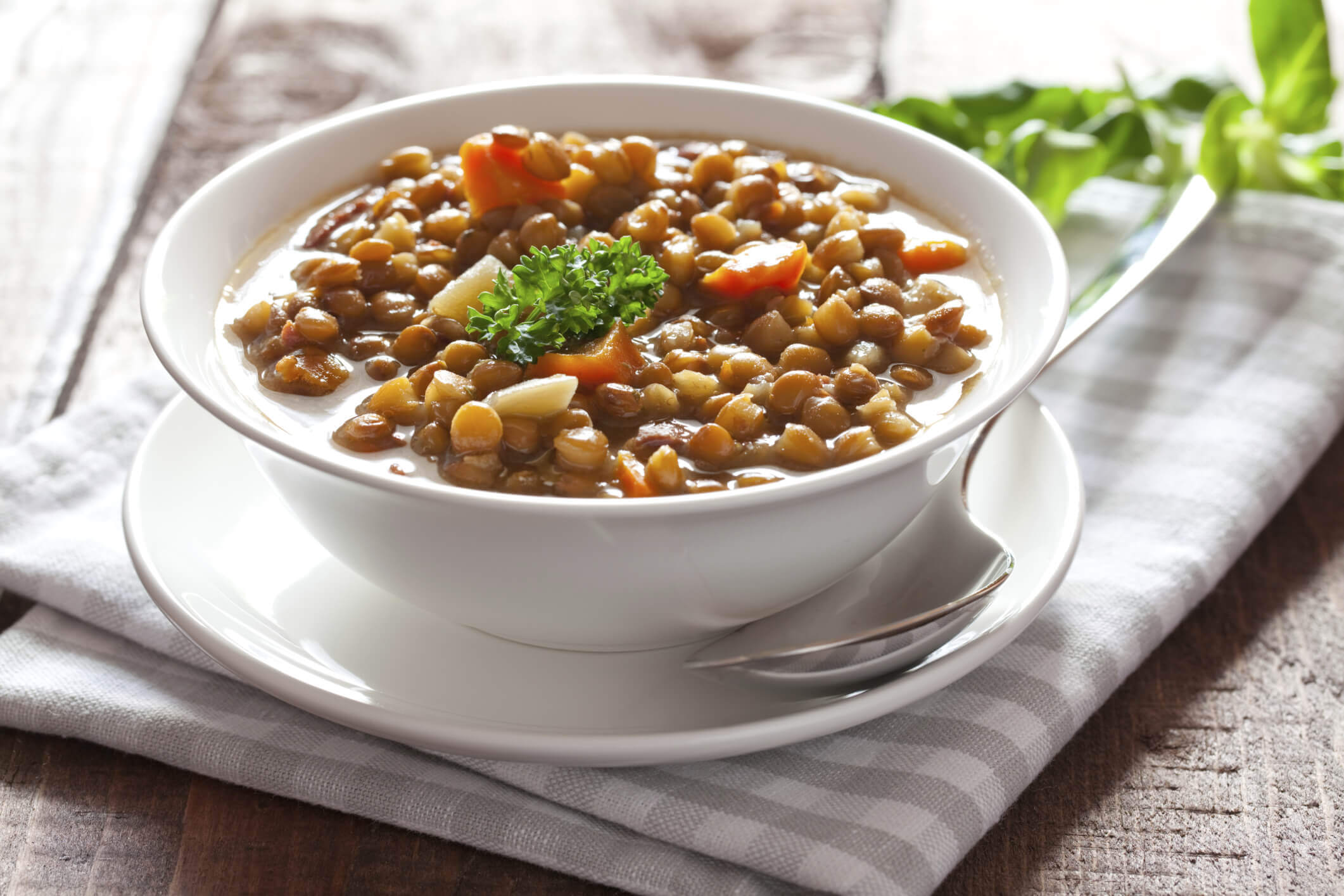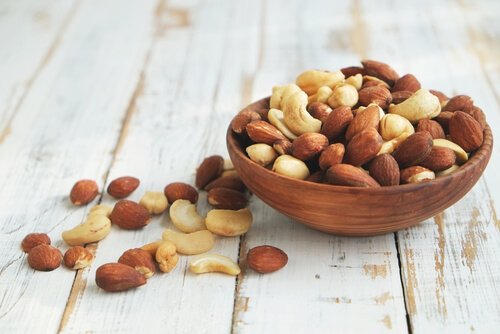Foods That Contain Folic Acid

Folic acid is a fundamental vitamin that should be taken during pregnancy. It can prevent the baby from suffering certain diseases. In this article we’ll show you how to incorporate this important vitamin into your diet.
Many foods contain folic acid (vitamin B9), which is responsible for preventing defects in the closure of the neural tube of the embryo during pregnancy. Folic acid deficiency can cause serious disorders such as spina bifida and anencephaly.
According to South Carolina’s Institute of Environmental Health Sciences, taking a small quantity of this vitamin daily can prevent babies from suffering cleft lip.
Foods that contain folic acid
It is important for everyone to take good care of their diets. However, this is even more important when it comes to pregnant women. Babies require certain nutrients and specific vitamins.
Here are a few options to begin incorporating vitamin B9 into your diet:
Green leafy vegetables
Green leafy vegetables contain folic acid. Some examples of vegetables that have a high concentration of vitamins B9 are: broccoli, spinach (providing up to 263 micrograms per serving), chard, green asparagus and lettuce. These vegetables can be easily integrated into your diet.
Lentils

Lentils are rich in folic acid. In addition, incorporating soy, peas or chickpeas to your diet will not only provide you with large amounts of this important vitamin, but will also provide huge amounts of fiber. Fiber is important for the proper functioning of the intestinal tract.
Citric fruits
Citric fruits such as papayas, oranges, kiwis, strawberries and raspberries provide large amounts of folic acid.
Avocados also provide vitamin B9 along with vitamin C, potassium, iron, magnesium and calcium. Other fruits that are highly recommended include: oranges, bananas and melons.
Nuts
Nuts are another great source of this nutrient. Many people tend to snack on nuts. Peanuts, almonds, flax-seeds, sunflower seeds and sesame seeds are highly recommended during pregnancy.
Bread and cereal
Some bread and other food products made with grain also contain folic acid. A single slice of bread contains up to 60 micrograms of folic acid.
That is why cereal is often highly recommended during pregnancy. Don’t hesitate to include it in your breakfast.
Food of animal origin
Although food of animal origin doesn’t contain the same amount of folic acid as those mentioned above, they can also be a good source of group B vitamins.
Chicken liver, turkey, veal, seafood, fish and dairy products are great sources of folic acid.
“In some countries they enrich flour with folic acid in order to help pregnant women increase their intake of this vitamin.”
Benefits of folic acid
Folic acid can provide numerous benefits. In addition to playing an important role during pregnancy, it helps prevent the occurrence of fetal malformations, spina bifida and many other issues.

So, what are the other benefits of folic acid?
- Plays an important role in the synthesis of DNA and cell re-composition.
- Can help protect the body from cardiovascular diseases.
- Folic acid can prevent eye diseases, sleep disorders and depression.
- Helps prevent congenital spinal and brain defects.
- Often used in the treatment of degenerative diseases and neurological disorders.
- Vitamin B9 helps the body maintain itself, and it’s also important for the creation of new cells.
- Used in the treatment of Alzheimer’s disease.
Now that you know the foods that contain folic acid, it is important to integrate them into your diet during pregnancy.
It is important to keep in mind that although you may have these elements in your diet, your doctor may also prescribe pharmacological supplements to meet your body’s needs.
Folic acid is a fundamental vitamin that should be taken during pregnancy. It can prevent the baby from suffering certain diseases. In this article we’ll show you how to incorporate this important vitamin into your diet.
Many foods contain folic acid (vitamin B9), which is responsible for preventing defects in the closure of the neural tube of the embryo during pregnancy. Folic acid deficiency can cause serious disorders such as spina bifida and anencephaly.
According to South Carolina’s Institute of Environmental Health Sciences, taking a small quantity of this vitamin daily can prevent babies from suffering cleft lip.
Foods that contain folic acid
It is important for everyone to take good care of their diets. However, this is even more important when it comes to pregnant women. Babies require certain nutrients and specific vitamins.
Here are a few options to begin incorporating vitamin B9 into your diet:
Green leafy vegetables
Green leafy vegetables contain folic acid. Some examples of vegetables that have a high concentration of vitamins B9 are: broccoli, spinach (providing up to 263 micrograms per serving), chard, green asparagus and lettuce. These vegetables can be easily integrated into your diet.
Lentils

Lentils are rich in folic acid. In addition, incorporating soy, peas or chickpeas to your diet will not only provide you with large amounts of this important vitamin, but will also provide huge amounts of fiber. Fiber is important for the proper functioning of the intestinal tract.
Citric fruits
Citric fruits such as papayas, oranges, kiwis, strawberries and raspberries provide large amounts of folic acid.
Avocados also provide vitamin B9 along with vitamin C, potassium, iron, magnesium and calcium. Other fruits that are highly recommended include: oranges, bananas and melons.
Nuts
Nuts are another great source of this nutrient. Many people tend to snack on nuts. Peanuts, almonds, flax-seeds, sunflower seeds and sesame seeds are highly recommended during pregnancy.
Bread and cereal
Some bread and other food products made with grain also contain folic acid. A single slice of bread contains up to 60 micrograms of folic acid.
That is why cereal is often highly recommended during pregnancy. Don’t hesitate to include it in your breakfast.
Food of animal origin
Although food of animal origin doesn’t contain the same amount of folic acid as those mentioned above, they can also be a good source of group B vitamins.
Chicken liver, turkey, veal, seafood, fish and dairy products are great sources of folic acid.
“In some countries they enrich flour with folic acid in order to help pregnant women increase their intake of this vitamin.”
Benefits of folic acid
Folic acid can provide numerous benefits. In addition to playing an important role during pregnancy, it helps prevent the occurrence of fetal malformations, spina bifida and many other issues.

So, what are the other benefits of folic acid?
- Plays an important role in the synthesis of DNA and cell re-composition.
- Can help protect the body from cardiovascular diseases.
- Folic acid can prevent eye diseases, sleep disorders and depression.
- Helps prevent congenital spinal and brain defects.
- Often used in the treatment of degenerative diseases and neurological disorders.
- Vitamin B9 helps the body maintain itself, and it’s also important for the creation of new cells.
- Used in the treatment of Alzheimer’s disease.
Now that you know the foods that contain folic acid, it is important to integrate them into your diet during pregnancy.
It is important to keep in mind that although you may have these elements in your diet, your doctor may also prescribe pharmacological supplements to meet your body’s needs.
All cited sources were thoroughly reviewed by our team to ensure their quality, reliability, currency, and validity. The bibliography of this article was considered reliable and of academic or scientific accuracy.
- Agencia Española de Seguridad Alimentaria y Nutrición (AESAN). (25 de mayo de 2023). Recomendaciones de consumo de pescado por presencia de mercurio. https://www.aesan.gob.es/AECOSAN/web/seguridad_alimentaria/ampliacion/mercurio.htm
- BDA. The Association of UK Dietitians. (julio 2023). Folic acid. https://www.bda.uk.com/resource/folic-acid.html
- Centros para el Control y la Prevención de Enfermedades (CDC). (23 de junio de 2022). Conceptos básicos sobre el ácido fólico. https://www.cdc.gov/ncbddd/spanish/folicacid/about.html
- Comunidad de Madrid. (s. f.). Alimentación durante el embarazo. Consultado el 8 de octubre de 2023. https://www.comunidad.madrid/servicios/salud/alimentacion-embarazo
- Food Standards Australia New Zeland. (agosto 2023). Folic acid fortification. https://www.foodstandards.gov.au/consumer/nutrition/folicmandatory/Pages/default.aspx
- Mayo Clinic. (23 de abril de 2022). Anemia por deficiencia de hierro durante el embarazo: consejos de prevención. https://www.mayoclinic.org/es/healthy-lifestyle/pregnancy-week-by-week/in-depth/anemia-during-pregnancy/art-20114455
- Ministerio de Agricultura, Pesca y Alimentación. (s. f.). Berza. Consultado el 8 de octubre de 2023. https://www.mapa.gob.es/es/ministerio/servicios/informacion/berza_tcm30-102440.pdf
- National Institutes of Health. (30 de noviembre de 2022). Folate. https://ods.od.nih.gov/factsheets/Folate-HealthProfessional/
- National Institutes of Health. (1 de noviembre de 2022). ¿Qué es el folato? ¿Para qué sirve?. https://ods.od.nih.gov/factsheets/Folate-DatosEnEspanol/
- U.S. Department of Agriculture. (1 de abril de 2019). Peas, green, raw. https://fdc.nal.usda.gov/fdc-app.html#/food-details/170419/nutrients
- U.S. Department of Agriculture. (1 de abril de 2019). Broccoli, raw. https://fdc.nal.usda.gov/fdc-app.html#/food-details/170379/nutrients
- U.S. Department of Agriculture. (1 de abril de 2019). Chickpeas (garbanzo beans, bengal gram), mature seeds, cooked, boiled, without salt. https://fdc.nal.usda.gov/fdc-app.html#/food-details/173757/nutrients
- U.S. Department of Agriculture. (1 de abril de 2019). Spinach, raw. https://fdc.nal.usda.gov/fdc-app.html#/food-details/168462/nutrients
- U.S. Department of Agriculture. (1 de abril de 2019). Brussels sprouts, raw. https://fdc.nal.usda.gov/fdc-app.html#/food-details/170383/nutrients
- U.S. Department of Agriculture. (1 de abril de 2019). Oranges, raw, all commercial varieties. https://fdc.nal.usda.gov/fdc-app.html#/food-details/169097/nutrients
- U.S. Department of Agriculture. (1 de abril de 2019). Blackberries, raw. https://fdc.nal.usda.gov/fdc-app.html#/food-details/173946/nutrients
- U.S. Department of Agriculture. (1 de abril de 2019). Raspberries, raw. https://fdc.nal.usda.gov/fdc-app.html#/food-details/167755/nutrients
- U.S. Department of Agriculture. (1 de abril de 2019). Nuts, almonds. https://fdc.nal.usda.gov/fdc-app.html#/food-details/170567/nutrients
- U.S. Department of Agriculture. (1 de abril de 2019). Seeds, sesame seeds, whole, dried. https://fdc.nal.usda.gov/fdc-app.html#/food-details/170150/nutrients
- U.S. Department of Agriculture. (1 de abril de 2019). Fish, salmon, Atlantic, farmed, raw. https://fdc.nal.usda.gov/fdc-app.html#/food-details/175167/nutrients
- U.S. Department of Agriculture. (1 de abril de 2019). Chard, swiss, raw. https://fdc.nal.usda.gov/fdc-app.html#/food-details/169991/nutrients
- U.S. Department of Agriculture. (1 de abril de 2019). Sweet potato, raw, unprepared (Includes foods for USDA’s Food Distribution Program). https://fdc.nal.usda.gov/fdc-app.html#/food-details/168482/nutrients
This text is provided for informational purposes only and does not replace consultation with a professional. If in doubt, consult your specialist.








